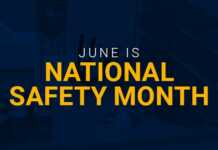Do you sometimes find it difficult to hold your safety meetings on a consistent basis? Do you get push back or questions on your need to have safety meetings if you are not having accidents?
Safety meetings are a great way for employers to communicate the company’s commitment to safety to employees, and to make sure that employees are familiar with the elements of the safety program. Effective safety meetings should also provide open, two-way communication of safety-related concerns between management and employees.
Short, frequent safety training meetings will enable employees to learn their jobs properly, bring new ideas to the workplace, reinforce existing safety policies and put the injury and illness prevention program into action.
There are five primary reasons for conducting safety meetings:
- Communicate Policies and Procedures
- Deliver Safety Training
- Review Accidents and Incidents
- Solve Safety Related Problems
- Handle Departmental Matters
If you are a manager or a supervisor, then safety training is part of your job. You have to provide adequate instruction and guidance, and teaching safety is part of that job. Here are some tips to help you provide effective safety training.
- Hold meetings regularly, such as once a month, so that employees become accustomed to them as part of the work routine.
- Hold your meetings in a place that’s comfortable and free of distractions. But if you’re going to talk about a particular type of machine, consider having the group gather near the machine.
- Pick a time that doesn’t disrupt work activities and at which everyone is alert and most likely to pay attention.
- Don’t let your meeting drag on. “Keep It Short and Simple” (KISS) should be your motto; from 5 to 15 minutes is sufficient.
- Make sure your choice is relevant to the work your crew performs.
- Consider timeliness. Lockout Tagout would be a timely topic when machine repairs are on the schedule. If a worker recently incurred a back injury, “Lifting and Manual Material Handling” is a natural place to turn for your safety talk.
- Try to stick to one topic, and be specific. Rambling all over the lot is a sure way to lose your audience’s attention.
- Never dismiss a comment or suggestion or concern from an employee, always bring up employee concerns that you cannot address on the spot with your manager. You never know what suggestion will improve the safety effort of the company.
- To prepare for the meeting, you can read a safety talk but during the meeting, don’t just read the safety talk to the employees; put it into your own words, so that your audience will relate to it better. Try to adapt it to your workplace, tell a personal story on the topic to make it relevant to your employees.
- To make the safety meeting more interesting, add visual aids. For instance, if you are talking about tag-out & lock-out, have a lock and tag available to display.
- Encourage group discussions by asking questions. For example, you can kick off the meeting by describing an accident and then asking for workers’ suggestions on how it might have been avoided. Be sure to keep the meeting on track, and do not allow it to turn into a general gripe session.
Each employee who attends the meeting should sign the safety meeting attendance form. This record is important. If the company is questioned by OSHA, the form can be used as evidence that employees were given specific safety information and instructions. After the meeting, follow up with your employees to see if they are practicing what you preached. That’s the surest way to determine whether your safety talks are effective. Employees who have shown initiative by asking questions or coming up with good ideas should be given a word of praise either at the meeting or when you pass their workstations.

















